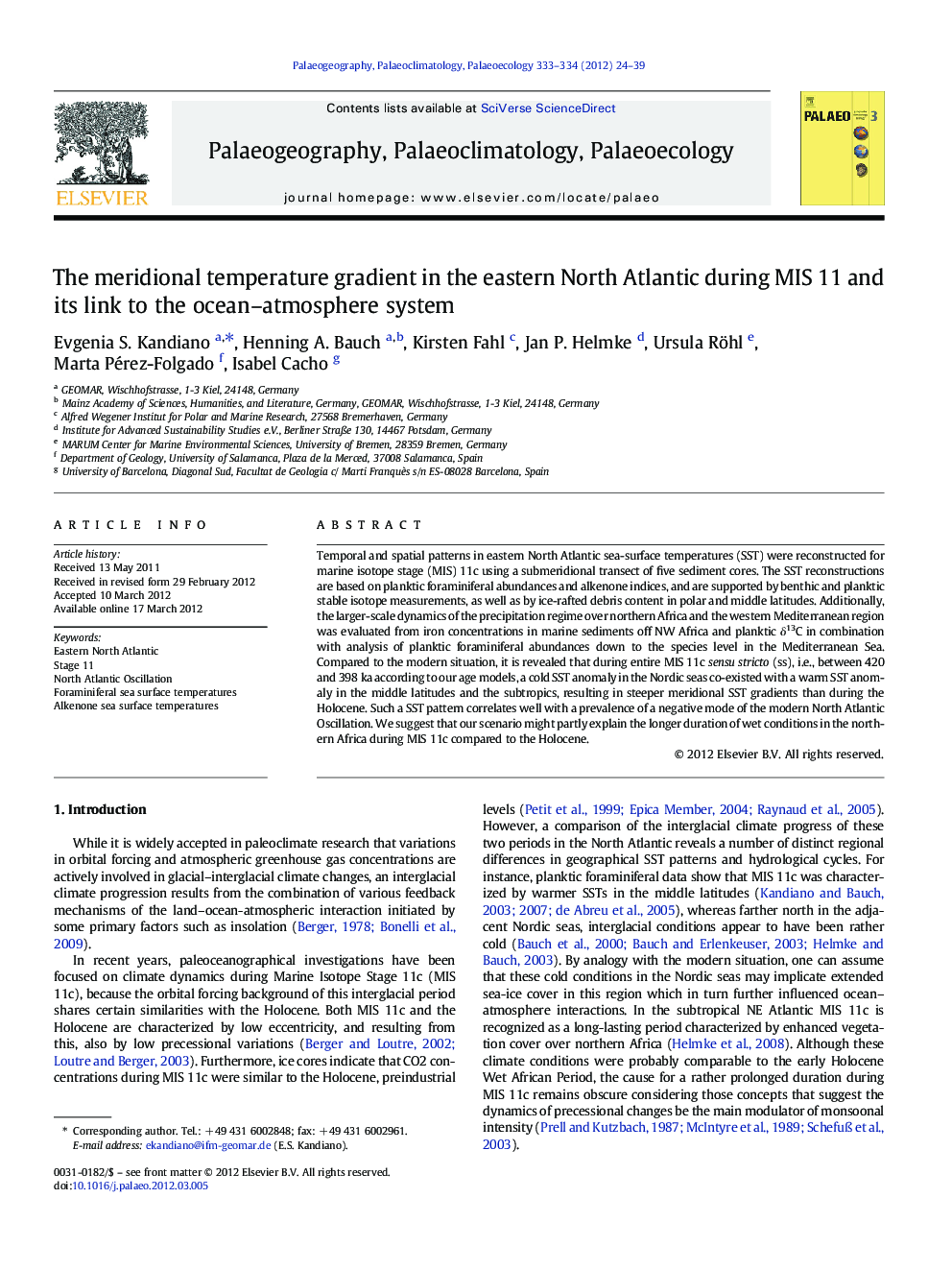| Article ID | Journal | Published Year | Pages | File Type |
|---|---|---|---|---|
| 4466944 | Palaeogeography, Palaeoclimatology, Palaeoecology | 2012 | 16 Pages |
Temporal and spatial patterns in eastern North Atlantic sea-surface temperatures (SST) were reconstructed for marine isotope stage (MIS) 11c using a submeridional transect of five sediment cores. The SST reconstructions are based on planktic foraminiferal abundances and alkenone indices, and are supported by benthic and planktic stable isotope measurements, as well as by ice-rafted debris content in polar and middle latitudes. Additionally, the larger-scale dynamics of the precipitation regime over northern Africa and the western Mediterranean region was evaluated from iron concentrations in marine sediments off NW Africa and planktic δ13C in combination with analysis of planktic foraminiferal abundances down to the species level in the Mediterranean Sea. Compared to the modern situation, it is revealed that during entire MIS 11c sensu stricto (ss), i.e., between 420 and 398 ka according to our age models, a cold SST anomaly in the Nordic seas co-existed with a warm SST anomaly in the middle latitudes and the subtropics, resulting in steeper meridional SST gradients than during the Holocene. Such a SST pattern correlates well with a prevalence of a negative mode of the modern North Atlantic Oscillation. We suggest that our scenario might partly explain the longer duration of wet conditions in the northern Africa during MIS 11c compared to the Holocene.
► A ocean–atmosphere interaction in the North Atlantic during MIS 11 is investigated. ► We reconstructed temporal and geographical SST patterns. ► We found a cold SST anomaly in the north and a warm SST anomaly in the subtropics. ► Our data evidence prolonged humid conditions in Sahel and in the Mediterranean. ► We conclude that negative North Atlantic Oscillation index dominated during MIS 11.
